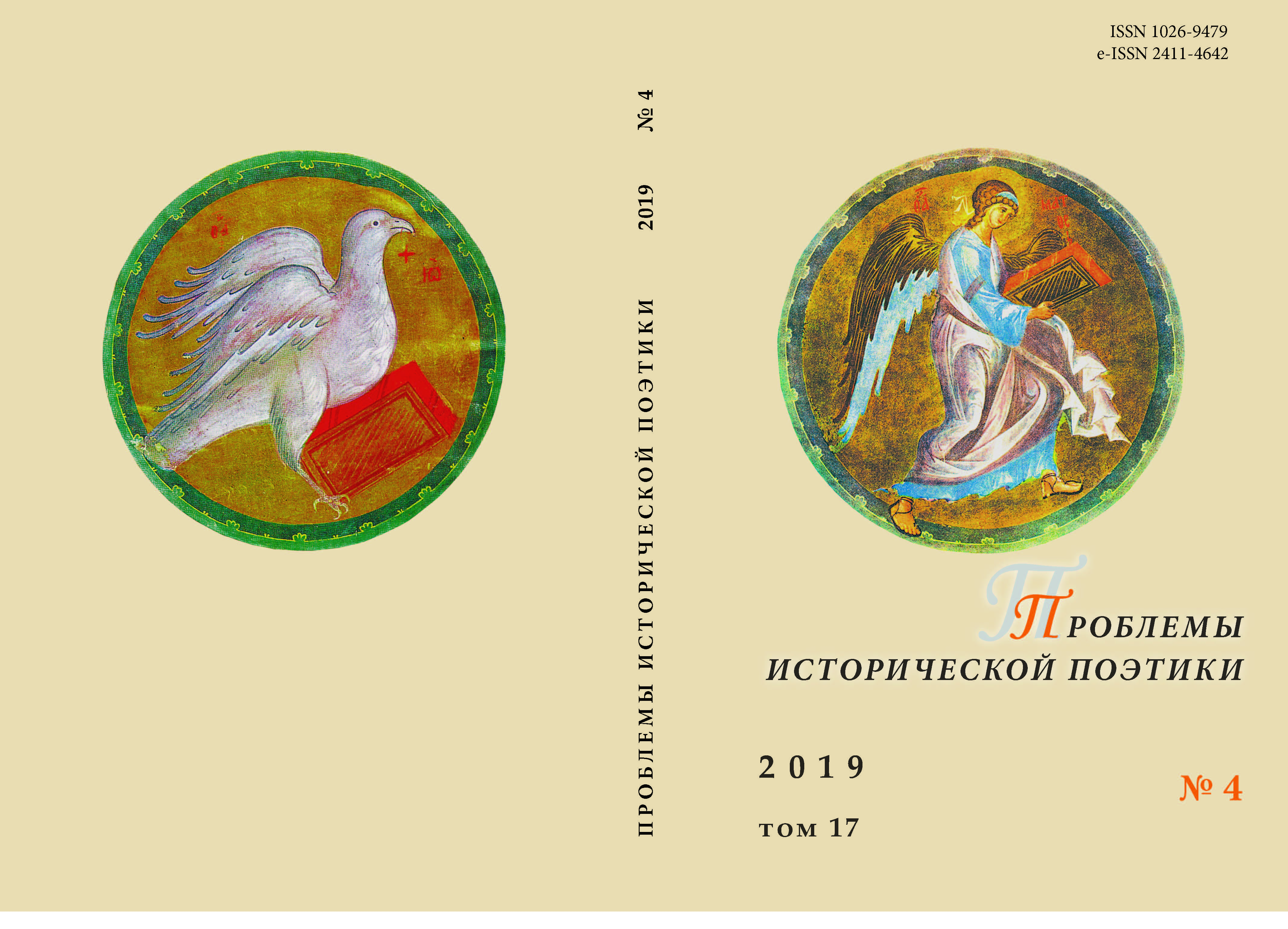МОТИВЫ ЯРОСТИ И ЗВЕРЯ В РАССКАЗЕ А. ПЛАТОНОВА «ОДУХОТВОРЕННЫЕ ЛЮДИ»
THE MOTIFS OF RAGE AND BEAST IN ANDREY PLATONOV’S STORY “ODUKHOTVORENNYE LYUDI” (“INSPIRED PEOPLE”)
Author(s): Irirna SpiridonovaSubject(s): Studies of Literature, Russian Literature, Theory of Literature
Published by: Петрозаводский государственный университет
Keywords: A. Platonov; motif; figurative parallel Human vs. Animal; subtext; context; L. Leonov; I. Ehrenburg; literature on the Great Patriotic War;
Summary/Abstract: The article discusses the morphology and semantics of the rage and beast motifs in the story by A. Platonov “Odukhotvorennye lyudi” (1942). The motivic organization of the work significantly differs from the Soviet aesthetics of the heroic and the traditions of the heroic epos: in the Platonov’s story the opposition Us vs. Them is disrupted. In the ideological and aesthetic canon of the literature on the Great Patriotic War, the antithesis of the motifs of the people’s rage and the enemy-beast is enshrined (L. Leonov, I. Ehrenburg et al.). The “Odukhotvorennye lyudi” puts a semantic emphasis on the contamination of the motifs of the rage, the beast and the void in the human soul. This motivic triad determines the entire system of characters and pose the problem of devastation / bestiality of a person in a world, which has turned into a bloodbath. This complex of motifs creates a two-level (text–subtext) structure and transfers the conflict from the external (socio-political) into the internal (existential) plan, thus, opposes the title of the work and deduces the central theme of inspiration from heroic rhetoric to metaphysical perspective. The figurative parallel Human vs. Animal that goes back to the myth, in the metaphorical development of the Platonov’s plot receives re-semantization in the context of the New Testament tradition. The motifs of Rage and Beast, concentrating the tragedy of man in the war, remain within the plot, which opens and completes the leitmotif of Love. The free love sacrifice and thanksgiving of life motifs are put in the finale of the spiritual evolution of the characters. The writer showed the spiritual victory of man over the evil of war — the Lamb over the Beast. These meanings of life, obtained by the Russian people through the centuries of suffering, affirmed in their Orthodox spirituality, are discovered by the author and his characters anew in the deadly opposition to fascism.
Journal: Проблемы исторической поэтики
- Issue Year: 17/2019
- Issue No: 4
- Page Range: 301-325
- Page Count: 25
- Language: English, Russian

